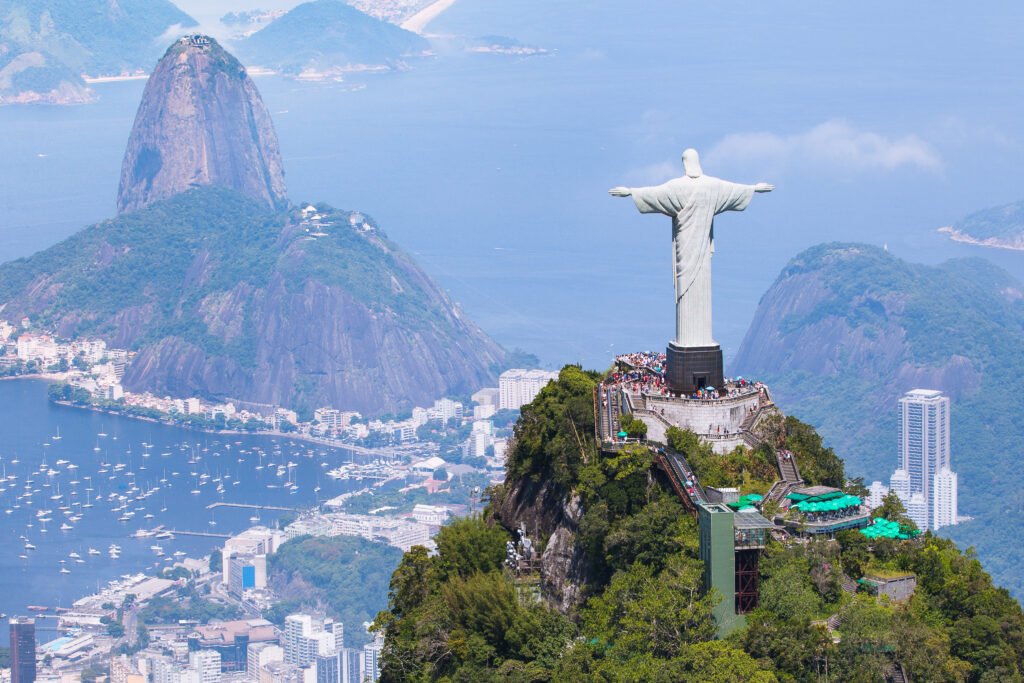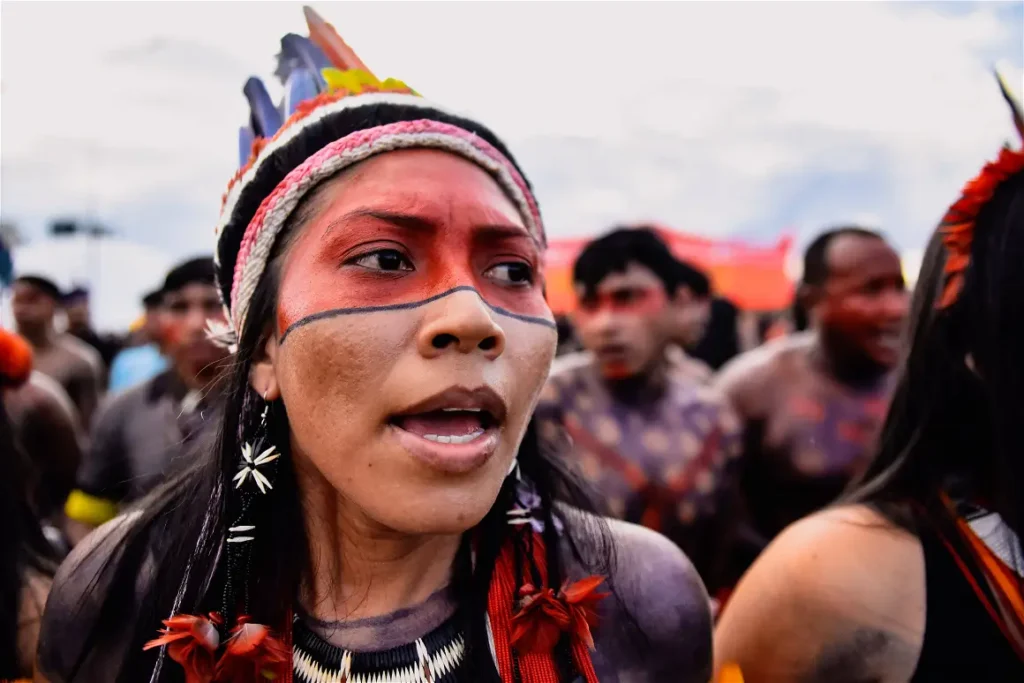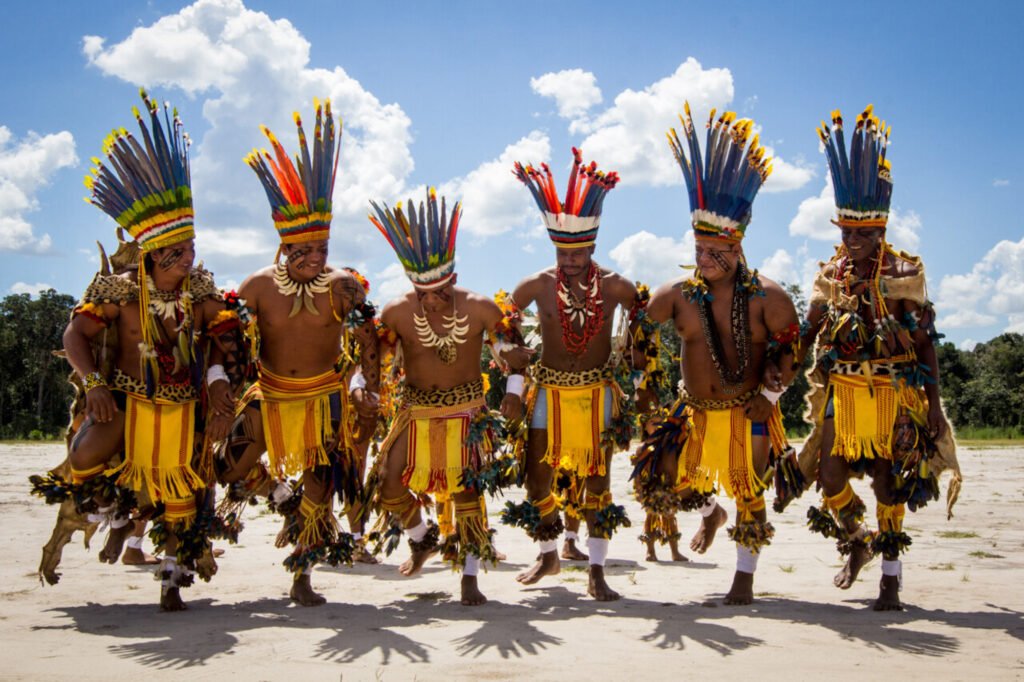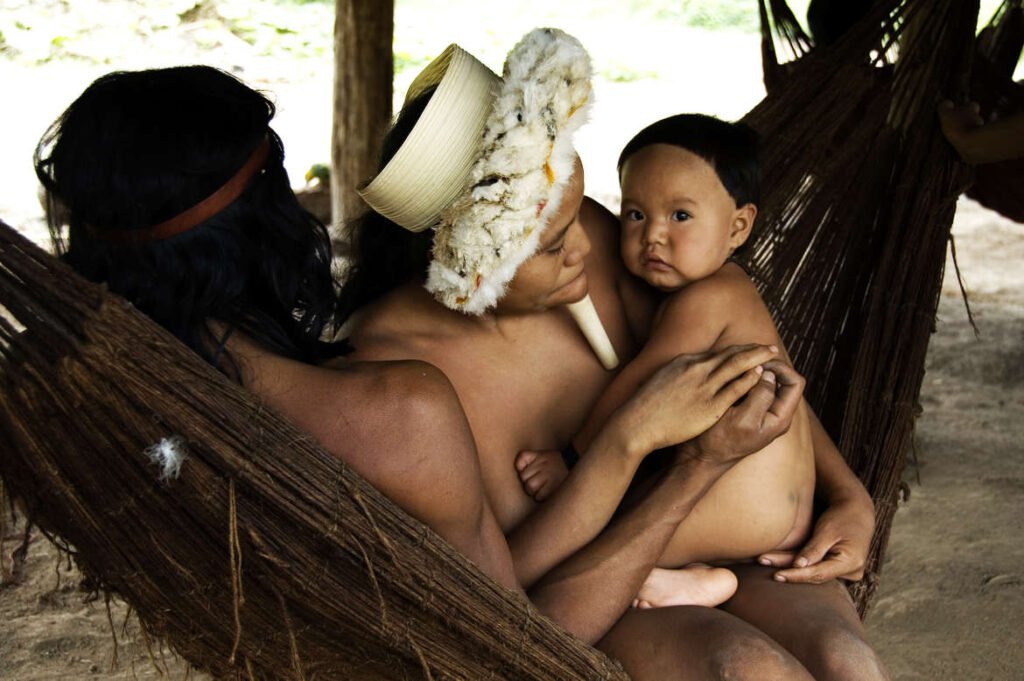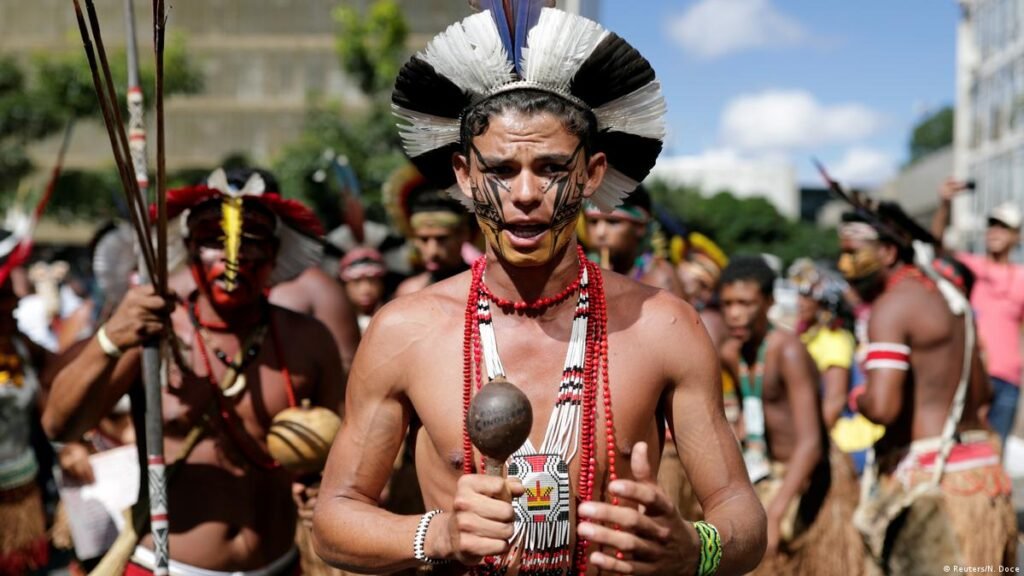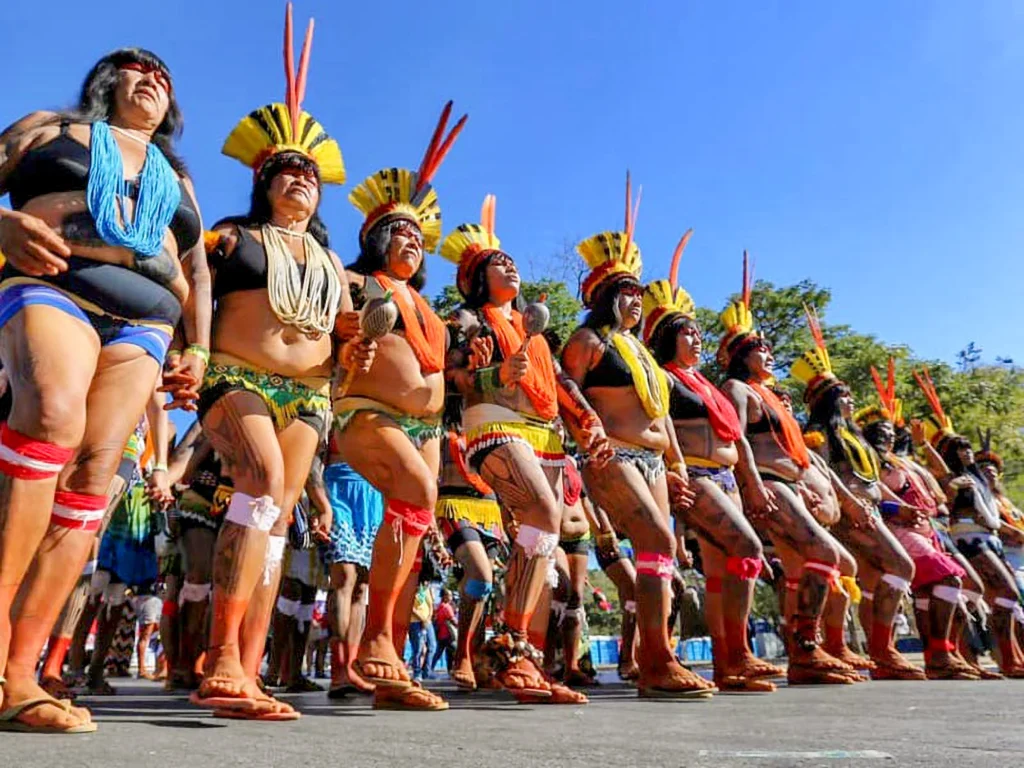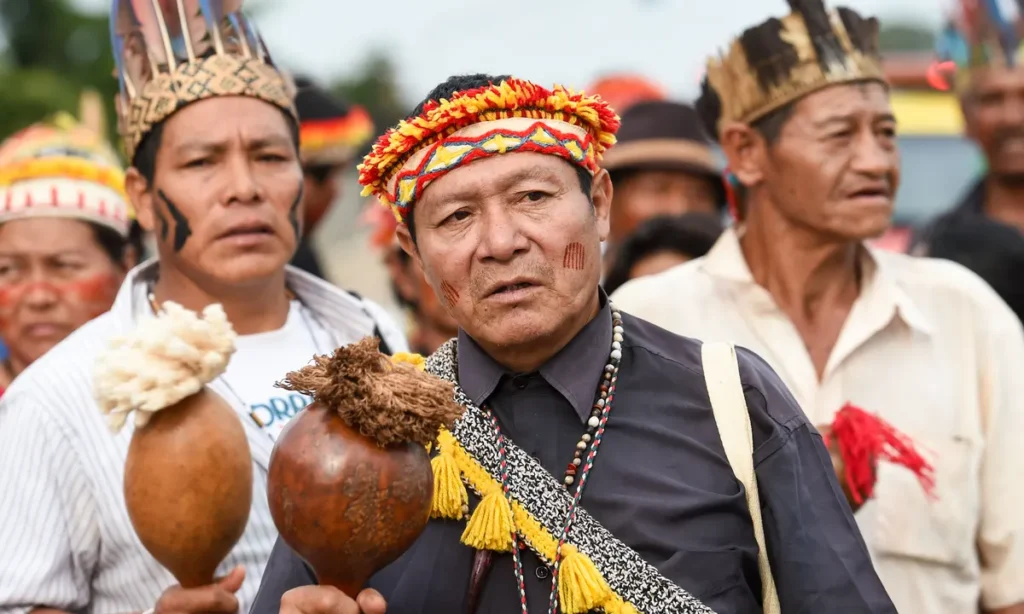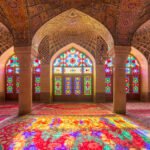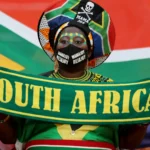Introduction:
Brazil, officially known as the Federative Republic of Brazil, is the largest country in both South America and Latin America. It is the world’s fifth-largest country by area and the sixth most populous, with over 213 million people. The capital city is Brasília, while São Paulo is the largest city.
Brazil’s geography is diverse, encompassing the Amazon rainforest, which is the world’s largest tropical rainforest, extensive river systems, the Pantanal wetlands, and vast coastal regions. The country’s climate ranges from equatorial in the north to temperate in the south, making it a biodiversity hotspot with numerous unique ecosystems.
Economically, Brazil is one of the world’s largest economies, with a diverse range of industries including agriculture, mining, manufacturing, and services. It is a major producer of coffee, soybeans, sugarcane, and beef. The Brazilian real (BRL) is the official currency, and the country is known for its abundant natural resources, which play a crucial role in its economy.
Culturally, Brazil is a vibrant melting pot of influences from indigenous peoples, Portuguese colonizers, African slaves, and various immigrant groups. This diversity is reflected in Brazil’s music, dance, festivals, and cuisine. Samba and bossa nova are iconic Brazilian music genres, and the annual Carnival in Rio de Janeiro is one of the world’s most famous celebrations.
Brazil’s history includes periods of colonization, empire, and republic, with significant events such as the declaration of independence from Portugal in 1822 and the abolition of slavery in 1888. The country transitioned to a republic in 1889 and has undergone various political changes, including military rule and democratization.
Politically, Brazil is a federal presidential constitutional republic with a multi-party system. The President of Brazil serves as both the head of state and the head of government. The country has a strong tradition of political activism and social movements, contributing to its dynamic political landscape.
Tourism in Brazil is a major industry, attracting millions of visitors each year to its natural wonders, historic sites, and vibrant cities. Key attractions include the Amazon rainforest, the Pantanal wetlands, Iguaçu Falls, and the beaches of Rio de Janeiro and Florianópolis. Brazil’s cultural richness, natural beauty, and warm hospitality make it a popular destination for travelers worldwide.
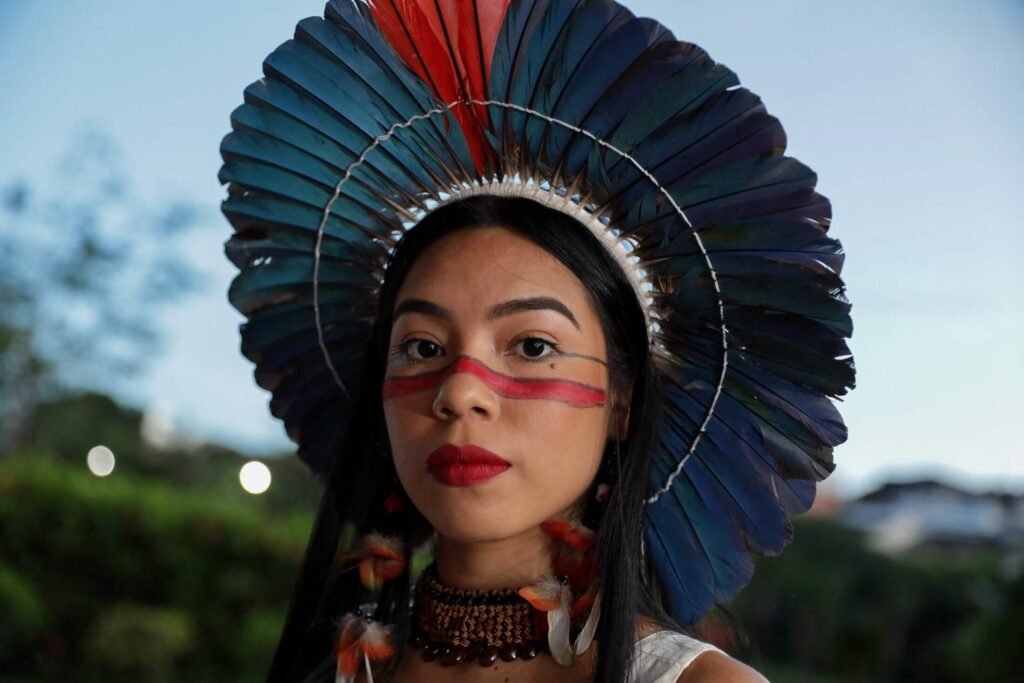
110 Facts About Brazil (2024)
Basic Information
| Number | Category | Details |
|---|---|---|
| 1. | Current Name | Brazil |
| 2. | National Name | República Federativa do Brasil (Federative Republic of Brazil) |
| 3. | Former Names | Terra de Santa Cruz |
| 4. | Date of Establishment | September 7, 1822 (Independence from Portugal) |
| 5. | Date of Independence | September 7, 1822 (from Portugal) |
| 6. | Leadership | President: Luiz Inácio Lula da Silva |
| 7. | Government Type | Federal presidential constitutional republic |
Geography
| Number | Category | Details |
|---|---|---|
| 8. | Capital City | Brasília |
| 9. | Important Cities | São Paulo, Rio de Janeiro, Salvador, Belo Horizonte |
| 10. | Land Area | 8.516 million square kilometers |
| 11. | Total Area | 8.516 million square kilometers |
| 12. | Neighboring Countries (Land) | Argentina, Bolivia, Colombia, Guyana, Paraguay, Peru, Suriname, Uruguay, Venezuela |
| 13. | Neighboring Countries (Sea) | None |
| 14. | UNESCO World Heritage Sites | Brasília, Iguaçu National Park, Historic Centre of Salvador (22 sites) |
| 15. | UNESCO World Natural Sites | Amazon Rainforest, Pantanal (7 sites) |
| 16. | Climate | Tropical, temperate, arid, subtropical |
| 17. | Biodiversity | Home to jaguars, toucans, anacondas, and over 1,300 bird species |
| 18. | Famous River | Amazon River |
| 19. | Famous Mountain | Sugarloaf Mountain |
| 20. | Coastline Length | 7,491 kilometers |
| 21. | Major Islands | Fernando de Noronha, Ilha Grande |
| 22. | Longest River | Amazon River |
| 23. | Highest Waterfall | Cachoeira do El Dorado |
| 24. | Largest Lake | Lagoa dos Patos |
| 25. | Largest Forest | Amazon Rainforest |
Population
| Number | Category | Details |
|---|---|---|
| 26. | Population (2024) | Approximately 213 million |
| 27. | Population (1950) | 53 million |
| 28. | Population (1900) | 17 million |
| 29. | Projected Population (2070) | 228 million |
| 30. | Population Density | 25 people per square kilometer |
| 31. | Urban Population (%) | 87% |
| 32. | Rural Population (%) | 13% |
Demographics
| Number | Category | Details |
|---|---|---|
| 33. | Ethnicity/Race | White (47.7%), Mixed (43.1%), Black (7.6%), Other (1.6%) |
| 34. | Languages | Portuguese (official), indigenous languages |
| 35. | National Language | Portuguese |
| 36. | Religion | Christianity (65% Catholic, 22% Protestant), Other (13%) |
| 37. | Median Age | 33.5 years |
| 38. | Life Expectancy | 75.9 years |
| 39. | Birth Rate | 13.5 births per 1,000 people |
| 40. | Death Rate | 6.7 deaths per 1,000 people |
Economic Indicators
| Number | Category | Details |
|---|---|---|
| 41. | Monetary Unit | Brazilian Real (BRL) |
| 42. | GDP | $2.3 trillion (2022 est.) |
| 43. | GDP per Capita (PPP) | $15,600 (2022 est.) |
| 44. | Income Level | Upper-middle income |
| 45. | Consumer Price Inflation | 9.3% (2022 est.) |
| 46. | Current Account Balance | -$18.7 billion (2022 est.) |
| 47. | Exchange Rate (Per $) | 1 USD = 5.2 BRL |
| 48. | Unemployment Rate | 11.2% (2022 est.) |
| 49. | Stocks Inward ($ billion) | 620 (2022 est.) |
| 50. | Real GDP Growth (%) | 2.7% (2022 est.) |
| 51. | Labor Force (Million) | 105 million |
| 52. | Major Industries | Textiles, shoes, chemicals, cement, lumber, iron ore, tin, steel, aircraft, motor vehicles and parts, other machinery and equipment |
| 53. | Major Exports | Soybeans, iron ore, crude petroleum, raw sugar, coffee |
| 54. | Major Imports | Refined petroleum, vehicle parts, integrated circuits, crude petroleum, pharmaceuticals |
| 55. | Public Debt (% of GDP) | 88.1% (2022 est.) |
| 56. | Tax Revenue (% of GDP) | 13.3% (2022 est.) |
| 57. | Minimum Wage | 1,212 BRL per month |
| 58. | Average Household Income | 24,558 BRL per year |
| 59. | Inflation Rate | 9.3% (2022) |
| 60. | Interest Rate | 11.75% (2022) |
| 61. | Major Trade Partners | China, United States, Argentina, Netherlands, Germany |
Social Indicators
| Number | Category | Details |
|---|---|---|
| 62. | Literacy Rate | 93.2% |
| 63. | Fertility Rate | 1.7 children per woman |
| 64. | Infant Mortality Rate | 13.2 per 1,000 live births |
| 65. | Under-5 Mortality Rate | 14.7 per 1,000 live births |
| 66. | National Holidays | Independence Day, Carnival, Christmas |
| 67. | Health Care System | Universal healthcare system (SUS) |
| 68. | Health Expenditure (% of GDP) | 9.1% (2022 est.) |
| 69. | Obesity Rate | 22.1% of adults |
| 70. | Drinking Water Source | 98% of the population has access to clean drinking water |
| 71. | Access to Sanitation | 86% of the population has access to improved sanitation facilities |
| 72. | Average Life Satisfaction | 6.6/10 |
| 73. | Major Health Issues | Cardiovascular diseases, diabetes, respiratory diseases |
| 74. | Smoking Rate | 12% of adults |
Culture and Society
| Number | Category | Details |
|---|---|---|
| 75. | Famous People | Pelé, Oscar Niemeyer, Paulo Coelho, Gisele Bündchen |
| 76. | Legal Marriage Age | 18 years |
| 77. | Gender Inequality Index | 0.407 (2021) |
| 78. | National Sport | Soccer |
| 79. | Sport Achievements | Multiple World Cup wins in soccer, Olympic medals |
| 80. | National Animal | Jaguar |
| 81. | National Fruit | Açaí Berry |
| 82. | Famous Landmarks | Christ the Redeemer, Sugarloaf Mountain, Iguaçu Falls |
| 83. | National Dish | Feijoada |
| 84. | Major Newspapers | Folha de S.Paulo, O Globo, Estado de S.Paulo |
| 85. | Major TV Channels | Rede Globo, SBT, RecordTV |
| 86. | Popular Music Genres | Samba, bossa nova, MPB, sertanejo |
| 87. | National Theatre | Teatro Municipal, Rio de Janeiro |
| 88. | National Gallery | São Paulo Museum of Art |
| 89. | Popular Festivals | Carnival, Festa Junina, Parintins Folklore Festival |
| 90. | Average Internet Speed | 21 Mbps |
| 91. | Most Popular TV Show | Big Brother Brasil |
| 92. | Most Popular Book | The Alchemist by Paulo Coelho |
| 93. | Most Popular Sport | Soccer |
| 94. | Most Visited Museum | Museu do Amanhã (Museum of Tomorrow) |
| 95. | Largest Stadium | Maracanã Stadium |
| 96. | National Anthem | Hino Nacional Brasileiro |
| 97. | Famous Historical Sites | Ouro Preto, Salvador’s Historic Center, Brasília |
| 98. | Major Brands | Petrobras, Vale, Embraer, Havaianas |
| 99. | Famous Foods | Pão de queijo, brigadeiro, moqueca |
| 100. | Famous Drinks | Caipirinha, coffee, guaraná |
Education
| Number | Category | Details |
|---|---|---|
| 101. | Best Public University | University of São Paulo |
| 102. | Best Private University | Fundação Getulio Vargas |
| 103. | Education Rank | 38th globally |
| 104. | School Enrollment Rate | 96.6% for primary education |
| 105. | Average Class Size | 30 students |
| 106. | Notable Alumni | Dilma Rousseff, Fernando Henrique Cardoso, Jorge Amado |
| 107. | Public Spending on Education | 6.1% of GDP |
| 108. | Number of Universities | Over 2,000 |
| 109. | Popular Study Abroad Destinations | United States, Portugal, Germany |
| 110. | Literacy Programs | Extensive adult literacy programs available |
History
Brazil’s history is rich and varied, beginning with indigenous cultures that have inhabited the region for thousands of years. Portuguese explorers, led by Pedro Álvares Cabral, arrived in 1500, and Brazil became a Portuguese colony. The colony grew to become a major producer of sugar and later coffee, with the labor of enslaved Africans playing a critical role in its economy.
In 1822, Brazil declared its independence from Portugal, becoming the Empire of Brazil. The monarchy lasted until 1889 when Brazil became a republic. The early 20th century saw significant industrialization and urbanization, transforming Brazil into a major global player.
The latter half of the 20th century was marked by political instability, including a military dictatorship from 1964 to 1985. The return to democracy led to economic reforms and rapid development, positioning Brazil as a leading emerging market.
The Flag of Brazil
The national flag of Brazil features a green field with a large yellow diamond in the center, inside of which is a blue globe with 27 white, five-pointed stars arranged as the night sky over Rio de Janeiro, including the Southern Cross. The globe has a white band with the national motto “Ordem e Progresso” (“Order and Progress”).
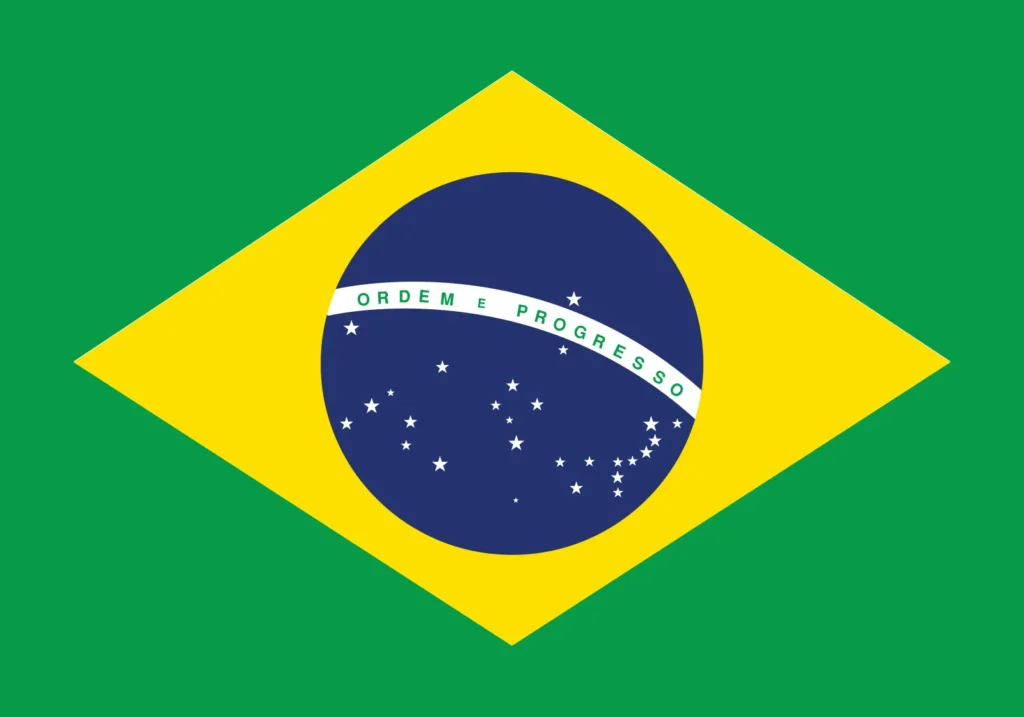
- Green Color: Represents the lush forests of Brazil.
- Yellow Diamond: Symbolizes the country’s wealth in gold.
- Blue Globe: Depicts the sky over Rio de Janeiro on the night of November 15, 1889, when Brazil declared itself a republic.
- White Stars: Represent the 26 states and the Federal District.
- National Motto: “Ordem e Progresso” emphasizes the nation’s aspiration for progress within order.
The flag symbolizes Brazil’s natural beauty, its wealth of resources, and its commitment to progress and unity.
